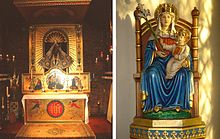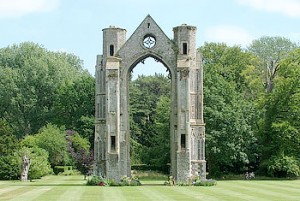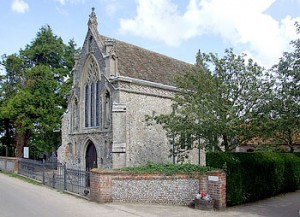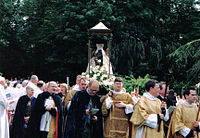Our Lady of Walsingham:
Posted by SociusSep 26
On Tuesday of this week (24 September), the Church celebrated another lovely feast of Our Blessed Lady – Our Lady of Walsingham. (This is a joint celebration with that of Our Lady of Ransom – this latter feast mostly concerning the people of Spain and the foundation of the Mercedarian Order, dating back to AD 1223. In Spain, Our Lady of Ransom has become venerated as the principal patron of the City of Barcelona. In England, on the other hand, Our Lady of Ransom was implored in more modern times to bring about the rescue of England, in order that it may become, once again, Our Lady’s Dowry).
Returning to my main theme and Walsingham’s great feast pertaining to Our Lady, the multitudinous ways in which we endeavour to honour Our Lady never cease to amaze me – a mark, no doubt of her greatness; her greatness is so above all our understanding that it defies description. We try to model, or paint, realistic pictures of her – many so beautiful even they seem beyond comparison; we turn to prose and prayer – where the words expressed, supplementing the many art forms – go some way towards enlarging our understanding of Mary, Mother of God – our Mother also, and, in a rather curious and surprising way, our Sister.
Sadly, I am quite sure in my own heart, that all our efforts – though created with the very highest ideals – fall short of the target. That does not mean we should not keep on trying, however, for Mary is deserving of our best efforts – now – always. We honour her as the mother of God and as Our Mother. We also know of her as one of two mainstays of the Holy Family, when Jesus was just a child – and as someone God’s Son could turn to, when a little older, for help, wisdom and compassion. Joseph must have been aware of this, as no doubt Mary was his lifelong and very wonderful helpmate. Later, Mary was to suffer, firstly in relation to Jesus’ leaving home, to follow his vocation, then to see him suffer, ignominiously, and to die the most gruesome death on a cross.
Mary then, apart from her compassionate and motherly gentle nature, must also have been a woman of resourcefulness in the bringing up of a family – in hard times it must be said – a woman of determination and unconquerable strength. Should we ever picture in our minds a woman of mildness or gentility to the point of weakness, we would be quite wrong. Such a person could not have withstood the kind of life that Mary chose to lead. Yet, knowing something of what lay ahead – Jesus’ life, her life – she was ever obedient to the will of God – a lesson for us as regards obedience and dedication to her chosen vocation.
 |
The Shrine of Our Lady of Walsingham
The feast of Our Lady of Walsingham dates back to Saxon times. In 1061, the Virgin Mary appeared to the Lady of the Manor, Richeldis de Faverches. This lady was taken ‘in spirit’ to Nazareth, shown the house where the Annunciation took place and asked by Our Lady to build a replica in Norfolk. Mary promised that ‘Whoever seeks my help there will not go away empty-handed.’ The simple wooden house that was then built there soon became the focus of special devotion to Our Lady, and this at a time when travel to the Holy Land and other foreign places of worship, was quite difficult – impossible for most people. The ‘Holy House’ was later encased in stone to protect it from the elements.
In 1153, the Augustinian Canons founded a Priory to care for the spiritual needs of the pilgrims. Their magnificent Priory Church was added in the fifteenth century, though only the ruins of the Priory arch remain, today.
 |
Walsingham became one of the foremost shrines of medieval Christendom. Among the pilgrims to the ‘Holy House’ were many royal visitors, and the ordinary people came in their thousands. In 1340, the Slipper Chapel was built at Houghton St Giles, a mile outside Walsingham. This was the final ‘station’ chapel on the way to Walsingham. It was here that pilgrims would remove their shoes to walk the final ‘Holy Mile’ to the Shrine barefoot.
 |
All this – the Holy Shrine and the resorting thereto – the pilgrimages – and with them Walsingham’s claim to holiness was soon to come to an end. Henry VIII ordered the dissolution of the monasteries and in 1538 the Priory was closed, the ‘Holy House’ burned to the ground and the statue of Our Lady taken to London to be destroyed.
Hundreds of barren years passed until the Slipper Chapel, a 14th century wayside pilgrim chapel, was restored and pilgrimages to Walsingham began once again. On the Feast of the Assumption of Our Lady, 15 August 1934, the first Mass since the Reformation was offered in the Slipper Chapel, and a few days later Cardinal Bourne led the first pilgrimage of modern times to England’s National Shrine of Our Lady.
 |
Procession at the Anglican National Pilgrimage to Walsingham
in the grounds of the ruined abbey, May 2003
Socius

No comments